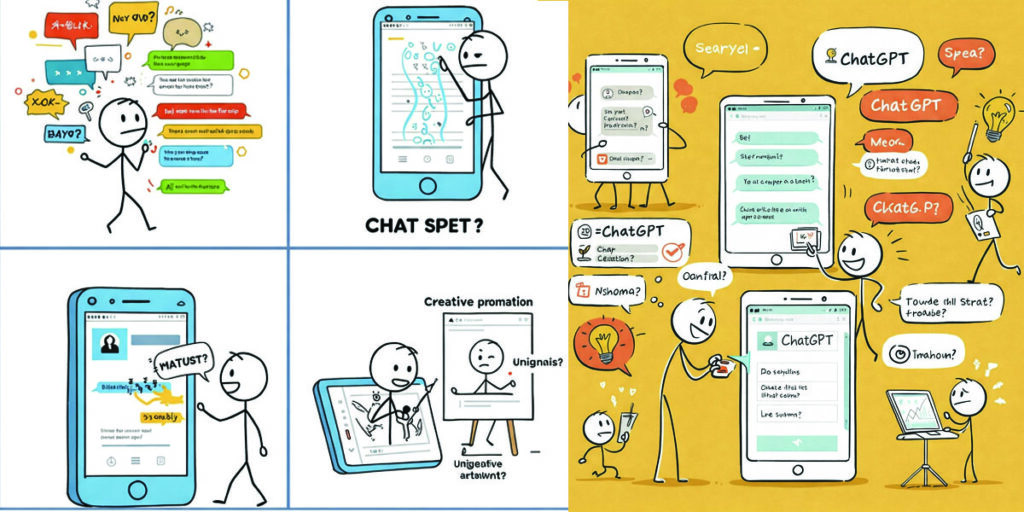AI writing assistant by Writesonic, built for real-time web-connected responses and creative tasks.
ChatSonic represents a significant step forward in the evolution of AI writing assistants. By integrating real-time web connectivity with a versatile suite of creative tools, it addresses key limitations of earlier models and offers a compelling value proposition in the growing market for AI-powered writing solutions. Furthermore, while primarily an individual productivity tool, ChatSonic holds considerable potential to enhance networking and collaboration by streamlining workflows, facilitating communication, and fostering idea generation. As AI continues its rapid advancement, ChatSonic and similar tools are poised to play an increasingly vital role in how we create, communicate, and connect in the digital age. Its history is rooted in the evolution of AI, its economic position is defined by its unique features, and its networking potential is just beginning to be realized. The future of AI writing, with tools like ChatSonic leading the charge, promises a more efficient, creative, and interconnected world of content creation.
The digital age has ushered in a proliferation of tools designed to augment human creativity and productivity. Among these innovations, Artificial Intelligence (AI) writing assistants have emerged as powerful allies for content creators, marketers, and businesses alike. ChatSonic, an AI writing assistant developed by Writesonic, stands out in this dynamic landscape due to its unique architecture, which prioritizes real-time web connectivity and versatile creative capabilities. To truly understand ChatSonic’s significance, we must delve into the historical context of AI writing, analyze its position within the economic market of AI-powered tools, and explore its potential for fostering networking and collaboration.
A Brief History of AI in Writing: From Rules to Neural Networks
The concept of machines assisting with writing is not entirely new. Early attempts in the mid-20th century focused on rule-based systems. These programs operated on predefined grammatical rules and templates, capable of generating simple texts or filling in blanks. However, their creativity and adaptability were severely limited. ELIZA, a natural language processing program developed in the 1960s, could simulate conversations by employing pattern matching and substitution, but it lacked genuine understanding or generative capabilities.
The late 20th and early 21st centuries witnessed significant advancements in machine learning. Statistical methods allowed computers to learn from vast amounts of text data, enabling them to generate more coherent and contextually relevant content. However, these early statistical models still struggled with creativity, nuanced language, and the ability to incorporate real-time information.
The deep learning revolution, fueled by the development of powerful neural networks, marked a paradigm shift in AI writing. Models like Recurrent Neural Networks (RNNs) and Transformers, with their ability to understand sequential data and long-range dependencies, paved the way for sophisticated text generation. OpenAI’s GPT (Generative Pre-trained Transformer) series, starting with GPT-1 in 2018, demonstrated unprecedented capabilities in generating human-like text across various styles and topics.
The Genesis of ChatSonic: Addressing the Limitations of Generative AI
While models like GPT-3 showcased remarkable text generation abilities, they also presented certain limitations. One significant drawback was their reliance on training data that had a knowledge cut-off. This meant they lacked awareness of recent events and real-time information available on the internet. This limitation could lead to outdated or inaccurate responses, particularly when dealing with current affairs, trending topics, or time-sensitive data.
Writesonic recognized this crucial gap and developed ChatSonic as a solution. Unlike traditional large language models that primarily rely on their static training data, ChatSonic is designed with real-time web connectivity. This allows it to access and process up-to-date information from the internet, enabling it to provide responses that are not only creative and coherent but also factually current. This integration of real-time data distinguishes ChatSonic from many of its predecessors and contemporaries.
Furthermore, ChatSonic was conceived with a focus on versatility and catering to a wide range of creative tasks. Beyond simple text generation, it aims to assist with brainstorming ideas, writing different content formats (articles, social media posts, marketing copy, etc.), summarizing information, and even generating creative content like poems or scripts. This multi-faceted approach positions ChatSonic as a comprehensive AI writing assistant for various user needs.
The Economic Market of AI Writing Assistants: Growth, Competition, and Value Proposition
The market for AI writing assistants has experienced significant growth in recent years and is projected to continue its upward trajectory. Several factors contribute to this expansion:
- Increasing Demand for Content: The digital landscape necessitates a constant stream of high-quality content for marketing, communication, and information dissemination. AI writing assistants offer a way to scale content creation efficiently.
- Improved AI Capabilities: Advancements in natural language processing and deep learning have led to AI models that can generate increasingly sophisticated and human-like text, making them more valuable for practical applications.
- Cost-Effectiveness: AI writing assistants can potentially reduce the time and cost associated with content creation, offering a compelling return on investment for businesses and individuals.
- Focus on Productivity and Efficiency: These tools can automate repetitive writing tasks, allowing human creators to focus on higher-level strategic thinking and creative ideation.
Within this burgeoning market, ChatSonic competes with a range of AI writing tools, each with its own strengths and weaknesses. Some focus on specific content formats or industries, while others prioritize different aspects like ease of use, advanced customization, or integration with other platforms. ChatSonic’s unique selling proposition lies in its real-time web connectivity, which addresses a critical limitation of many other AI writing models. This feature provides a significant advantage in scenarios requiring up-to-date information.
Furthermore, ChatSonic’s emphasis on creative versatility positions it as a valuable tool for a broad audience. Its ability to assist with various writing tasks, from generating marketing slogans to drafting detailed articles, makes it appealing to individuals and businesses with diverse content needs. The pricing models adopted by Writesonic for ChatSonic also play a crucial role in its market competitiveness, balancing affordability with the value provided.
Networking and Collaboration: The Untapped Potential of AI Writing Assistants
While primarily designed as individual productivity tools, AI writing assistants like ChatSonic hold significant potential for fostering networking and collaboration in several ways:
- Enhanced Team Efficiency: AI can streamline content creation workflows within teams. For instance, ChatSonic can assist with drafting initial content, summarizing research materials, or generating different versions of marketing copy, freeing up human team members to focus on strategic planning, editing, and refinement. This can lead to faster turnaround times and improved overall productivity.
- Facilitating Cross-Functional Collaboration: AI can act as a common ground for different teams within an organization. For example, the marketing and sales teams can leverage ChatSonic to create consistent and aligned messaging across various platforms. The product development and content teams can collaborate on generating user manuals and FAQs with the AI’s assistance.
- Bridging Communication Gaps: In international collaborations or teams with diverse linguistic backgrounds, AI writing assistants can help bridge communication gaps by providing quick translations or generating content in multiple languages. While not a perfect substitute for human translators, it can facilitate smoother initial communication and understanding.
- Idea Generation and Brainstorming: ChatSonic’s ability to generate creative text formats and explore different angles on a topic can be valuable for brainstorming sessions. Teams can use it to quickly generate a range of ideas or perspectives that can then be further developed and refined collaboratively.
- Personalized Communication and Outreach: For networking purposes, individuals can leverage ChatSonic to craft personalized emails, social media messages, or outreach materials. By providing context and key information, users can instruct the AI to generate tailored communication that resonates with specific individuals or groups.
- Building Online Presence: For freelancers and small businesses, ChatSonic can assist in creating consistent and engaging content for their websites and social media platforms, helping them build their online presence and network with potential clients or collaborators.
However, it’s crucial to acknowledge that AI writing assistants are tools, and human interaction remains essential for effective networking and collaboration. While ChatSonic can facilitate certain aspects of these processes, it cannot replace the nuances of human connection, empathy, and relationship building. The true power lies in the synergistic combination of AI assistance and human expertise.
The Future of ChatSonic and the Evolution of AI in Writing
The field of AI writing is rapidly evolving, and tools like ChatSonic are at the forefront of this transformation. Several trends are likely to shape the future of ChatSonic and the broader landscape of AI writing assistants:
- Enhanced Natural Language Understanding: Future iterations of AI models will likely exhibit even more sophisticated understanding of human language, including nuances, context, and intent. This will lead to more accurate, relevant, and creative text generation.
- Improved Personalization and Customization: AI writing assistants will become increasingly adept at learning individual user preferences, writing styles, and domain-specific knowledge. This will enable them to generate highly personalized and tailored content.
- Seamless Integration with Other Tools: Expect tighter integration of AI writing assistants with other productivity and collaboration platforms, streamlining workflows and enhancing overall efficiency.
- Multimodal Capabilities: Future AI models may expand beyond text generation to incorporate other media formats like images, audio, and video, offering a more comprehensive content creation experience.
- Ethical Considerations and Responsible Use: As AI writing becomes more prevalent, ethical considerations surrounding plagiarism, bias in generated content, and the impact on human writers will become increasingly important. Developers and users will need to prioritize responsible use and develop guidelines to mitigate potential risks.
- Specialized AI Writing Assistants: We may see the emergence of more niche AI writing assistants tailored to specific industries or content formats, offering highly specialized features and capabilities.
ChatSonic’s commitment to real-time web connectivity and its focus on creative versatility position it well to capitalize on these future trends. As AI continues to advance, ChatSonic has the potential to become an even more indispensable tool for individuals and teams seeking to enhance their writing productivity, creativity, and networking capabilities. Its ability to bridge the gap between static AI models and the dynamic information landscape of the internet offers a unique advantage in the ever-evolving world of digital content creation and communication.




















